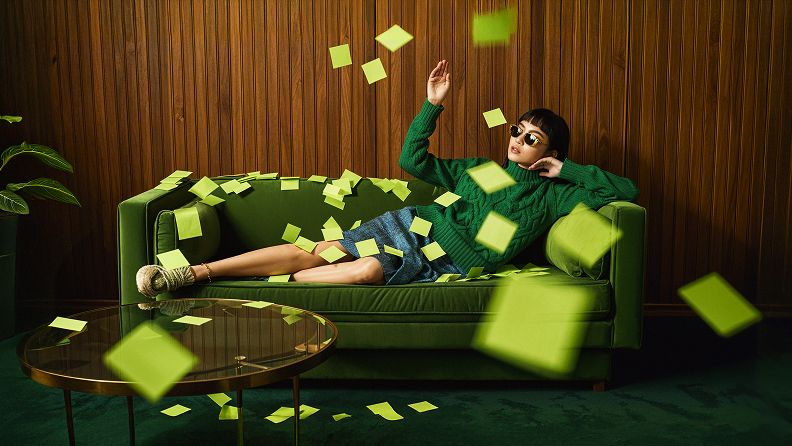30 Famous Logo Designs: What We Think of Them


A good logo is hard to come by. A great one is a statistical anomaly. But a classic logo? That’s the stuff of legends, possible only through A) spending multiple fortunes on ad space to bend public psyche to your will, or B) having a top-tier design team in your corner (not mutually exclusive).
We're going to walk you through some logos that inspired the creative minds on our team, and talk about what makes them special. We'll also take a look at some...uh, less inspiring examples.
Get ready to dive into:
- What makes a good logo
- Some of our favorite famous logos for brands worldwide
- Logos that just don’t cut it
What Makes a Good Logo?
When you picture Coca Cola, you probably don’t think of a dark, fizzy syrup as much as you do those cursive letters marquee-ing its bottles and cans. They ooze class and promise satisfaction—the Coca Cola guarantee. In spite of modern associations with anything but class—diabetes, heart disease, etc.—you probably know Coca Cola’s logo better than you know your mother’s maiden name. That’s a lot for a humble block of text, and it’s a hell of a logo.
The best logos are the ones a 3-year old could replicate with a crayon.
Kae laments that in spite of her statement above, brands spend years and millions of dollars in building their brand equity. “A good logo is one that makes you see an apple and think about a phone,” she adds.
While 78% of people consider logos a work of art, we thought of a few who wouldn't be afraid to challenge that notion. We had our profoundly-particular Creative Directors Kae Neskovic and Piotr Smietana comment on some of the most famous logos in the world, comparing how they look now to how they used to look on a scale of “love” to “meh”. They shared with us what makes famous logo rebrands super, what makes them subpar, and who’s desperately in need of an update.
Some of Our Favorite Famous Logos for Brands Worldwide
Burger King
Piotr: “Big improvement! New logo definitely aligns better with the company core. It’s fresh and organic, introducing bold and rich colors. Love it!” The colors are definitely a big hit for Burger King, since they appear in the top of most famous fast food logos worldwide.
Kae: “Really fun and clever: Love the simple usage of the Cooper Black font, the word mark that mimics a burger in the middle of two buns and the colors—everything fits their brand really well.”
YouTube
Piotr: "YouTube followed the flat design trend, and it works pretty well for them. Simply separating the red rounded play button from the logotype keeps the soul of YouTube, but allows the company to have a mark that can be easily identifiable. Fun fact is also that most famous logos with amazing marketing attached to it have less than three colors, something YouTube is a perfect example of."
Kae: “Another really great example of why logos work best if they’re simple. I love how they transformed such a simple symbol as the play button into a recognisable icon. At the same time they’re able to use their logo in a central place on their product, so that you keep interacting with it daily.”
Netflix
Kae: “Already a classic while still pretty new, there is something so interesting and cinematic about this slight arc on the bottom of the previous Netflix logo—it speaks to new horizons. At the same time, the recent simplification also really works without losing that exciting feel. They seem to have been at the forefront of one of the biggest logo trends for 2023; using stretched and blurred word or lettermarks is at the top of the popularity scale.”
Piotr: “We’ve all gotten used to the Netflix logo throughout the recent “indoor years”, so perhaps it has an unfair advantage. That said, there’s something very theatrical about the updated logo. It’s fun, simplistic and commanding all at once. Yes, Giant N, we will watch the remaining 5 episodes of Love on the Spectrum.”
Dunkin’ (Donuts)
Kae: "It was a good idea to rebrand from Dunkin’ Donuts to just Dunkin’. Even the rollout campaign was really impressive and simple. We love the simplicity of the logo and the evolution over the years, and the fact they separated the brand symbol (flag) and wordmark and are now using them separately, similarly to the mastercard brand, they managed to make two colors in a simple shape super recognizable.”
Piotr: “Quite an improvement! I like it. The new logo is fresh, simple and minimalistic. It still connects well to the old logo, while following the latest trends and making it easily recognizable.” This has our vote for ‘quirkiest fast food rebranding!
Famous Logos That Just Don’t Cut It
CIA
Kae: “Typical example of government officials being tone deaf (or tone blind in this case) in an effort to become more ‘diverse’ and modern as they say on their website.”
The new CIA logo looks more like a sticker for that techno party you really don’t want to go to.
Meta /Facebook
Kae: "Considering the new name of the company and the importance of the brand, it was important they create a memorable icon. The infinity loop is just not original. If only they would’ve opted for a simple wordmark only, like google did with Alphabet.”
While they still stuck to their classic blue—which should have been a smart move, since 65% of logos are either blue or black—it doesn't do much to impress.
Piotr: “The idea behind it is strong, but I feel that the original one was definitely more recognizable.”
Make Your Brand Iconic
If there’s one thing we hope you take from your scrolling here, it’s the weight that strong branding lends to a business. The logo is all about association: bringing your story and values into your branding in a clever and concise way. It’s not work that most companies can do alone, even within their own design teams.
With a team of dedicated designers and brand stewards in your back pocket, you can build a logo and brand that acts as a megaphone for your business’ best attributes—a beacon of ingenuity in a sea of competition.
David is a Senior Content Marketer at Superside. A former journalist with bylines too numerous to enumerate, he brings his love of storytelling and semantics to the marketing world. Recognizing the sizable gaps in the creative-as-a-service (CaaS) sector, he jumped at the chance to fill the creative void for ambitious brands. In his off hours, he enjoys loud music, making vegan meals and being made fun of for making vegan meals. He’ll gladly talk to you about any of the above on LinkedIn.
You may also like these

25 best multichannel brand campaigns in 2025 for inspiration
The evidence is clear: Multichannel marketing works.In fact, recent research reveals that 95% of marketers believe that integrating multiple marketing channels in ad campaigns improves audience targeting, according to industry. Companies with strong multichannel marketing campaigns experience a 9.5% rise in annual revenue and 91% higher customer retention rates.With so many top campaigns and great ideas out there, you might be wondering what can work best for your business this year, based on marketing goals, your industry and who's able to scale as much as you need.A leading creative subscription service like Superside offers a powerful way to grow your business with speed and efficiency, as we have done with top brands and enterprises for years now.Of course, taking inspiration from others is a wise place to start. Work through this curated list of creative ad campaign examples to find ideas for your next campaign.
15 Corporate Presentation Design Ideas & Services for 2025
Compelling presentations are deal-makers: They captivate audiences and drive decisive outcomes.In fact, the visual storytelling research is pretty convincing. 85% of people remember what they observed in a presentation three hours later, compared to 70% who recall what they heard. After three days, 60% remember the images, but only 10% remember the spoken content.Your presentations must be first-rate. They should simplify complex ideas, showcase information in an easy-to-grasp way, and tell persuasive stories.As an industry leader in corporate presentation design, Superside combines innovative tools, creative expertise and strategic thinking to craft professional visual stories for customers worldwide.You'll find the info on this page invaluable if you’re looking for the best enterprise presentation design service. Superside’s team shares a few killer corporate presentation design ideas to help you lift your game.
The 15 Types of Graphic Design in 2025 (With Real Examples)
Graphic design is more than just aesthetic appeal. It is a critical element of communication that can be used to inform, persuade, and engage audiences. When done well, graphic design can help businesses to reach new customers, build brand awareness, and drive sales.In this article, I'll take a look at the different types of graphic design and share examples of each.Fundamentals Every Graphic Designer Should KnowGraphic design focuses on creating visual content to communicate messages clearly and effectively, but this is just the tip of the iceberg.All the visual elements, graphic design principles and graphic design skills necessary to succeed create a cocktail that varies depending on the type of graphic design you are working on.






